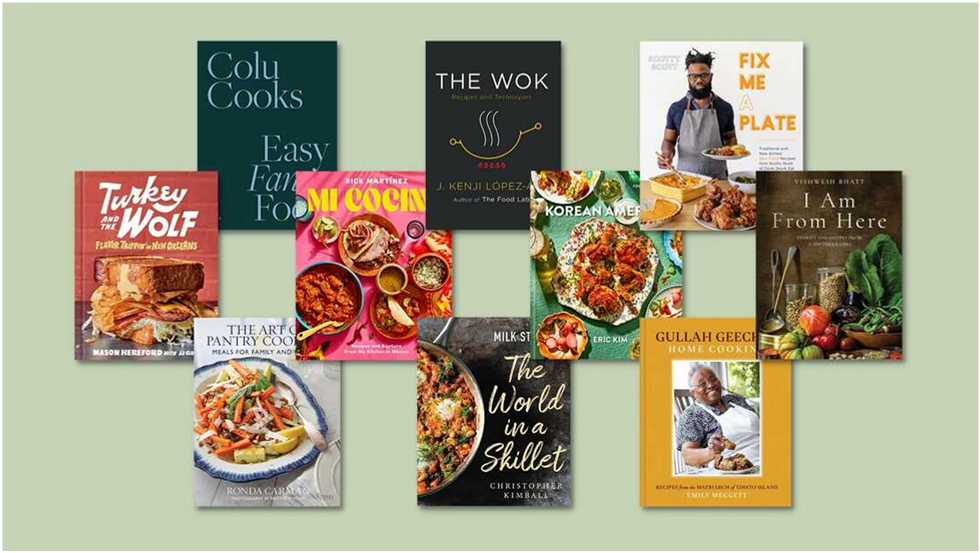.
Cookbooks provide us with ideas, knowledge, and, eventually, food. Whether you are thinking of creating a cookbook for personal reasons or professional ones, you will find this article on how to make a cookbook highly useful to create your own cookbook, from conception to completion.
Follow these important tips to achieve your goal of making a cookbook:
1.Plan the Chapters
Make an outline before you start generating recipes, formatting your content, or taking images. Starting with a thorough strategy can help you streamline the procedure. Define the many subsections or topics that will be included in your cookbook.
You can discover during the outline step that you have too many or too little of a certain kind of food or that you can photograph two distinct meals simultaneously. In general, it's preferable to have a clear vision of the finished result before starting each meal.
2.Testing the Recipes
It's not enough to just prepare a delicious supper. Knowing the recipe so well that it will turn out great every time you or your audience duplicate it is the actual difficulty of writing a cookbook.
Make meticulous notes on what you did each time you prepare the dish, and look out for any changes in your technique. You should proofread the book yourself to catch any common mistakes, but you should also make sure that each quantity is stated appropriately.
Verify that every item you named appears in the recipe's instructions. To ensure that a recipe is readily and precisely translated, it is essential to use a buddy who can prepare it exactly as you want.
3.Be Consistent
For your readers to understand what to anticipate with each recipe, the measurement abbreviations, ingredients, and recipe sections must remain consistent across your book.
If you write "unsalted butter" in one recipe and "butter" in the next, your reader may get the wrong idea and get perplexed. Make sure to use metric or imperial systems for all measurements and to spell and label ingredients consistently throughout your book.
Make sure your recipes have the same ingredients, title, directions, equipment, time, and ingredients in great detail to make the entire cooking process as easy as possible.
4.Layout Planning
You should take the bulk of your images in portrait format if you know you'll be utilizing a book with a portrait orientation. In order to generate full-bleed spreads or tiny, inset close-up photographs for those crucial recipes, you must know which dishes you want to include in your cookbook.
If you do, you may shoot them in landscape format or detail shots. When you arrange your book in advance, you may concentrate on the images and recipes that fill the whole page or are placed next to a full-bleed picture. You may check if your cookbook is beginning to flow at this point, even before you add the content.
5.Appealing Content
Good food photography relies on negative space to emphasize the stars of the shot. While an overloaded plate might tantalize those at the table, leaving space on the plate helps frame the food and affords more opportunity for balance and symmetry in food presentation.
This is also true for table set-ups. If each and every object in the shot isn't working hard, take it off the table. A knife doesn't tell the story of a soup, so don't have it cluttered the place setting. To make food grab your reader's attention, you have to ruthlessly rid your shots of distractions.
Photographs of the tastiest food are often taken with a single, natural light source coming from the side. Side lighting aids in highlighting texture and shape, while flashlight light may have a flattening, deafening impact. Photographing with natural light may include taking your shots in locations other than your kitchen and dining room to locate the ideal light or shooting the foods for your evening meal in the morning if the light in your area is best at that time.
Conclusion
In a cookbook, it might be detrimental to photograph your food at the same table near the same window, which may assist in creating a coherent appearance for a food blog. Your pictures will be more relatable if your food appears in more locations.
Try switching up your tablecloth and tableware. A holiday table may make a meal appear much more mouthwatering. As your viewers flip through the hundreds of pictures and pages, all the variances will keep things fascinating.
Ask your friends who have bright rooms if you may use them for a day to photograph recipes, perhaps in return for the meal you want to photograph. For the most compelling visual material, take as many pictures as possible, from as many perspectives as possible, and in as many settings as possible. What you don't utilize for the book might be used to promote it.
By following these tips on how to make a cookbook, you will be in a very good position to create an appealing and successful cookbook.




 StableDiffusion
StableDiffusion StableDiffusion
StableDiffusion StableDiffusion
StableDiffusion Photo by
Photo by  Photo by
Photo by  Photo by
Photo by 
 Photo by
Photo by  Photo by
Photo by  Photo by
Photo by  Photo by
Photo by  Photo by
Photo by 











